-
 Bitcoin
Bitcoin $85,697.3844
1.57% -
 Ethereum
Ethereum $1,638.9615
0.39% -
 Tether USDt
Tether USDt $0.9999
0.00% -
 XRP
XRP $2.1668
2.02% -
 BNB
BNB $589.6303
0.00% -
 Solana
Solana $132.3928
-0.10% -
 USDC
USDC $1.0000
-0.01% -
 TRON
TRON $0.2521
-1.70% -
 Dogecoin
Dogecoin $0.1597
-2.28% -
 Cardano
Cardano $0.6439
0.85% -
 UNUS SED LEO
UNUS SED LEO $9.4287
0.41% -
 Chainlink
Chainlink $12.6833
-0.80% -
 Avalanche
Avalanche $20.0262
0.05% -
 Stellar
Stellar $0.2425
-0.03% -
 Toncoin
Toncoin $2.9684
4.14% -
 Sui
Sui $2.2145
-3.52% -
 Hedera
Hedera $0.1672
0.05% -
 Shiba Inu
Shiba Inu $0.0...01194
-1.99% -
 Bitcoin Cash
Bitcoin Cash $333.3345
-1.23% -
 Litecoin
Litecoin $77.8594
0.59% -
 Polkadot
Polkadot $3.7096
1.64% -
 Hyperliquid
Hyperliquid $16.3941
4.91% -
 Dai
Dai $1.0000
0.01% -
 Bitget Token
Bitget Token $4.3126
1.07% -
 Pi
Pi $0.7411
-1.42% -
 Ethena USDe
Ethena USDe $0.9991
0.02% -
 Monero
Monero $213.9141
2.70% -
 Uniswap
Uniswap $5.4003
-0.80% -
 OKB
OKB $52.2630
-1.39% -
 Pepe
Pepe $0.0...07415
0.89%
What is a flash loan and its operating mechanism?
Flash loans in DeFi allow borrowing without collateral, repaid in one block, enabling arbitrage and liquidations, but carry risks like smart contract vulnerabilities.
Apr 13, 2025 at 11:22 pm
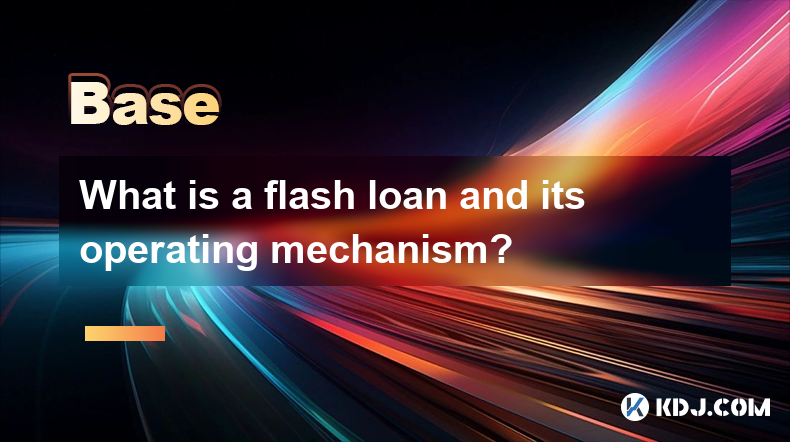
A flash loan is a unique financial product offered primarily within the decentralized finance (DeFi) ecosystem. It allows users to borrow assets without providing any collateral, provided that the loan is repaid within the same transaction block. This innovative lending mechanism has revolutionized the way liquidity is managed and utilized in DeFi, offering users the ability to execute complex financial strategies without upfront capital.
Understanding Flash Loans
Flash loans are an advanced feature of DeFi platforms, specifically designed to facilitate instant borrowing and repayment. Unlike traditional loans, which require collateral and a lengthy approval process, flash loans operate on the principle of atomicity. This means that the loan and its repayment must occur within a single blockchain transaction. If the borrower fails to repay the loan within the same block, the transaction is reverted, and no changes are made to the blockchain state.
How Flash Loans Work
The operation of a flash loan is intricately tied to the blockchain's transaction processing mechanism. Here's a detailed breakdown of how it works:
- Initiating the Loan: A user sends a transaction to a smart contract that supports flash loans, requesting a specific amount of cryptocurrency.
- Borrowing the Funds: The smart contract instantly transfers the requested amount to the user's wallet.
- Executing the Strategy: The user then uses these borrowed funds to execute a financial strategy, such as arbitrage, liquidations, or collateral swaps.
- Repaying the Loan: Before the transaction is completed, the user must repay the loan, plus any applicable fees, to the smart contract.
- Transaction Validation: If the loan is repaid within the same block, the transaction is validated and recorded on the blockchain. If not, the entire transaction is reverted, and the user's wallet remains unchanged.
Applications of Flash Loans
Flash loans have a wide range of applications within the DeFi ecosystem, enabling users to leverage liquidity in innovative ways. Some common use cases include:
- Arbitrage: Users can borrow funds to exploit price differences between different decentralized exchanges (DEXs), buying low on one platform and selling high on another.
- Liquidations: Borrowers can use flash loans to liquidate undercollateralized positions on lending platforms, profiting from the difference between the loan amount and the liquidated assets.
- Collateral Swaps: Users can swap collateral on lending platforms to optimize their positions, using flash loans to temporarily cover the required collateral.
Risks and Considerations
While flash loans offer significant opportunities, they also come with inherent risks. Understanding these risks is crucial for anyone considering using flash loans:
- Smart Contract Vulnerabilities: The security of flash loans depends on the robustness of the underlying smart contracts. Any vulnerabilities can be exploited, leading to significant financial losses.
- Market Volatility: The success of strategies like arbitrage depends on market conditions. Sudden price movements can turn profitable trades into losses.
- Complexity: The execution of flash loan strategies often involves complex smart contract interactions, which can be challenging to manage and debug.
Examples of Flash Loan Usage
To illustrate the practical application of flash loans, consider the following examples:
- Arbitrage Opportunity: A user notices that the price of Ethereum (ETH) is $2,000 on DEX A and $2,050 on DEX B. They initiate a flash loan for 100 ETH from a smart contract, buy the ETH on DEX A, and sell it on DEX B, repaying the loan and pocketing the $50 profit per ETH.
- Liquidation Strategy: A user identifies an undercollateralized position on a lending platform. They borrow the necessary funds via a flash loan, liquidate the position, and repay the loan, profiting from the difference between the loan amount and the liquidated assets.
Technical Implementation of Flash Loans
The technical implementation of flash loans involves writing and deploying smart contracts that can handle the borrowing and repayment logic. Here's a step-by-step guide on how to implement a basic flash loan smart contract:
- Choose a Blockchain Platform: Select a blockchain that supports smart contracts, such as Ethereum or Binance Smart Chain.
- Write the Smart Contract: Use a programming language like Solidity to write the smart contract. The contract should include functions for initiating the loan, transferring funds, and validating the repayment.
- Deploy the Contract: Deploy the smart contract to the chosen blockchain using a tool like Truffle or Remix.
- Interact with the Contract: Users can interact with the deployed contract using a wallet like MetaMask, initiating flash loans and executing their strategies.
Regulatory and Ethical Considerations
The use of flash loans raises several regulatory and ethical questions. While they are legal in most jurisdictions, the potential for manipulation and exploitation of market inefficiencies has led to scrutiny from regulators. Users must ensure that their use of flash loans complies with local laws and ethical standards.
Frequently Asked Questions
Q: Can flash loans be used for malicious purposes?
A: Yes, flash loans can be used maliciously to exploit vulnerabilities in smart contracts or manipulate market prices. However, responsible use and robust security measures can mitigate these risks.
Q: Are flash loans available on all DeFi platforms?
A: No, flash loans are only available on platforms that have implemented the necessary smart contract functionality. Popular platforms like Aave and dYdX offer flash loan services.
Q: How do flash loans affect the overall stability of the DeFi ecosystem?
A: Flash loans can both enhance and disrupt the stability of DeFi. They provide liquidity and enable innovative financial strategies, but they can also lead to market volatility and smart contract exploits if not managed carefully.
Q: What are the fees associated with flash loans?
A: Fees for flash loans vary by platform but typically include a small percentage of the borrowed amount. These fees are designed to cover the operational costs of the lending platform and incentivize the provision of liquidity.
Disclaimer:info@kdj.com
The information provided is not trading advice. kdj.com does not assume any responsibility for any investments made based on the information provided in this article. Cryptocurrencies are highly volatile and it is highly recommended that you invest with caution after thorough research!
If you believe that the content used on this website infringes your copyright, please contact us immediately (info@kdj.com) and we will delete it promptly.
- Ethereum (ETH) Price Prediction: ETH Up for Rally As Buying Signal Flashes
- 2025-04-15 18:00:12
- XRP Price Prediction: Technical Analysis and Market Momentum
- 2025-04-15 18:00:12
- Toncoin (TON) Is in the Spotlight as Several On-Chain and Technical Indicators Suggest a Possible Rally
- 2025-04-15 17:55:15
- MAGACOINFINANCE – Viral Momentum With Real ROI
- 2025-04-15 17:55:15
- When Peter Brandt speaks, the markets listen. This trading veteran, active since the 1970s, dropped a bombshell
- 2025-04-15 17:55:13
- KiloEx, a decentralized exchange (DEX) for trading perpetual futures, was hit by a sophisticated attack
- 2025-04-15 17:55:13
Related knowledge
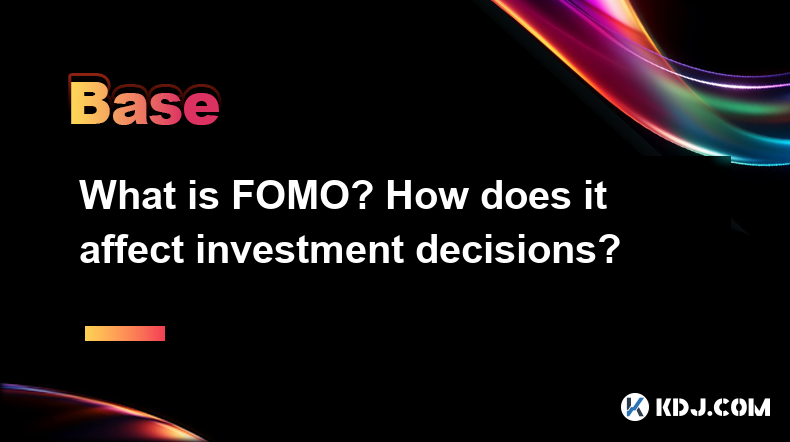
What is FOMO? How does it affect investment decisions?
Apr 15,2025 at 03:22pm
FOMO, or Fear Of Missing Out, is a psychological phenomenon that significantly impacts the cryptocurrency market. In the context of crypto investments, FOMO describes the anxiety that an individual feels when they believe others are reaping rewards from a market surge or a specific cryptocurrency's price increase, while they are not participating. This ...
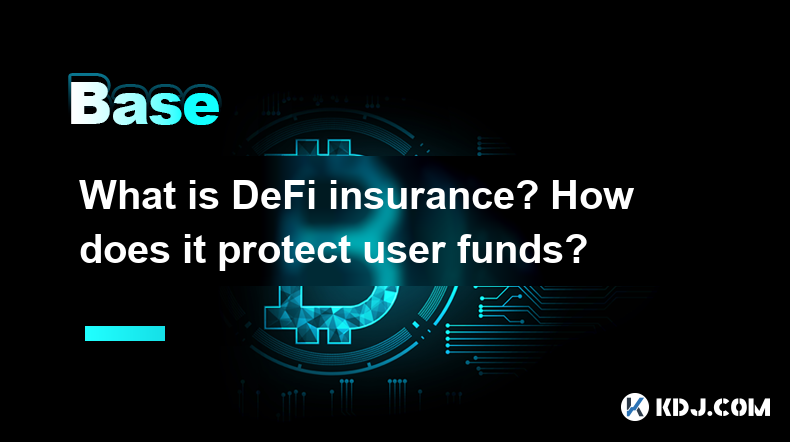
What is DeFi insurance? How does it protect user funds?
Apr 15,2025 at 02:22pm
What is DeFi insurance? How does it protect user funds? Decentralized Finance (DeFi) has revolutionized the way users interact with financial services on the blockchain. However, with the rise of DeFi, the need for robust security measures has become paramount. DeFi insurance is a critical component of this ecosystem, designed to protect users against p...
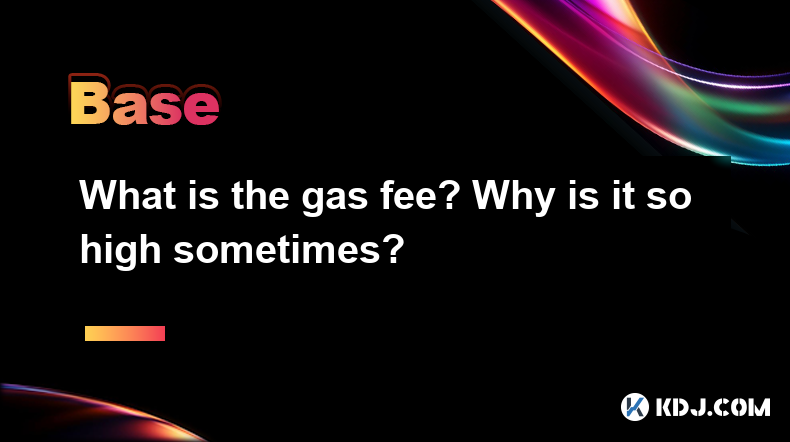
What is the gas fee? Why is it so high sometimes?
Apr 15,2025 at 02:43pm
The concept of gas fees is integral to understanding transactions on the Ethereum blockchain. Gas fees are payments made by users to compensate for the computing energy required to process and validate transactions or execute smart contracts on the Ethereum network. These fees are essential for the operation of the blockchain, as they incentivize miners...
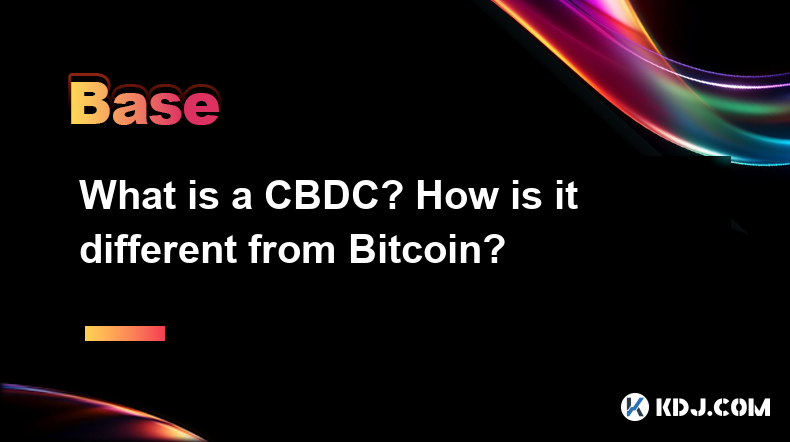
What is a CBDC? How is it different from Bitcoin?
Apr 15,2025 at 01:49pm
A Central Bank Digital Currency (CBDC) represents a digital form of a country's fiat currency, issued and regulated by its central bank. Unlike traditional physical currencies, CBDCs exist purely in digital form, offering a new way for governments to manage their monetary systems. CBDCs are designed to provide the benefits of digital currencies while ma...
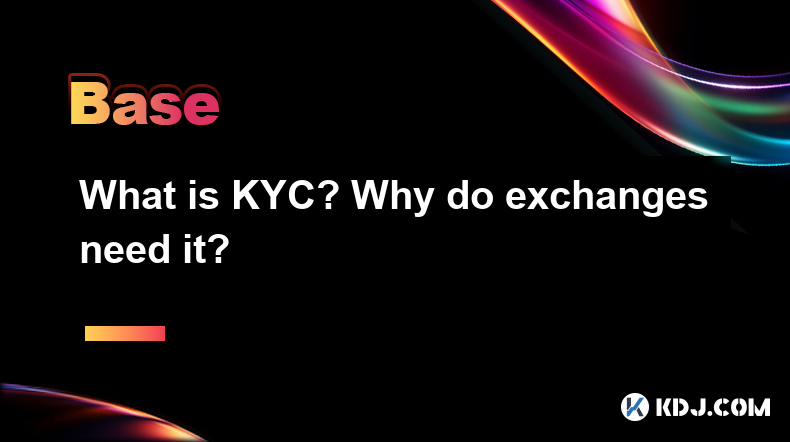
What is KYC? Why do exchanges need it?
Apr 15,2025 at 02:01pm
KYC, or Know Your Customer, is a process used by businesses, including cryptocurrency exchanges, to verify the identity of their clients. The primary goal of KYC is to prevent illegal activities such as money laundering, fraud, and terrorist financing. By implementing KYC procedures, exchanges can ensure compliance with regulatory requirements and maint...
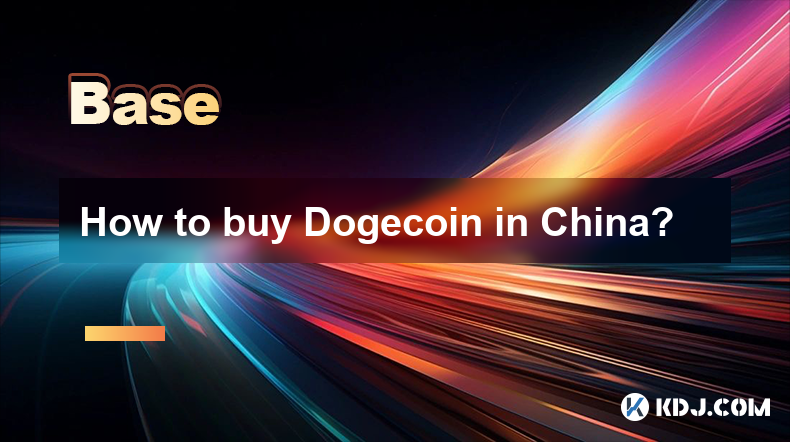
How to buy Dogecoin in China?
Apr 14,2025 at 04:35pm
How to buy Dogecoin in China (DOGE) Dogecoin is a decentralized digital currency known for its iconic dog pattern. Here are the detailed steps on how to buy Dogecoin in China. step 1. Register a digital currency exchange account First, you need to register an account on a digital currency trading platform regulated by China. It is recommended to choose ...

What is FOMO? How does it affect investment decisions?
Apr 15,2025 at 03:22pm
FOMO, or Fear Of Missing Out, is a psychological phenomenon that significantly impacts the cryptocurrency market. In the context of crypto investments, FOMO describes the anxiety that an individual feels when they believe others are reaping rewards from a market surge or a specific cryptocurrency's price increase, while they are not participating. This ...

What is DeFi insurance? How does it protect user funds?
Apr 15,2025 at 02:22pm
What is DeFi insurance? How does it protect user funds? Decentralized Finance (DeFi) has revolutionized the way users interact with financial services on the blockchain. However, with the rise of DeFi, the need for robust security measures has become paramount. DeFi insurance is a critical component of this ecosystem, designed to protect users against p...

What is the gas fee? Why is it so high sometimes?
Apr 15,2025 at 02:43pm
The concept of gas fees is integral to understanding transactions on the Ethereum blockchain. Gas fees are payments made by users to compensate for the computing energy required to process and validate transactions or execute smart contracts on the Ethereum network. These fees are essential for the operation of the blockchain, as they incentivize miners...

What is a CBDC? How is it different from Bitcoin?
Apr 15,2025 at 01:49pm
A Central Bank Digital Currency (CBDC) represents a digital form of a country's fiat currency, issued and regulated by its central bank. Unlike traditional physical currencies, CBDCs exist purely in digital form, offering a new way for governments to manage their monetary systems. CBDCs are designed to provide the benefits of digital currencies while ma...

What is KYC? Why do exchanges need it?
Apr 15,2025 at 02:01pm
KYC, or Know Your Customer, is a process used by businesses, including cryptocurrency exchanges, to verify the identity of their clients. The primary goal of KYC is to prevent illegal activities such as money laundering, fraud, and terrorist financing. By implementing KYC procedures, exchanges can ensure compliance with regulatory requirements and maint...

How to buy Dogecoin in China?
Apr 14,2025 at 04:35pm
How to buy Dogecoin in China (DOGE) Dogecoin is a decentralized digital currency known for its iconic dog pattern. Here are the detailed steps on how to buy Dogecoin in China. step 1. Register a digital currency exchange account First, you need to register an account on a digital currency trading platform regulated by China. It is recommended to choose ...
See all articles























































































